| 22 Jun 1802 |
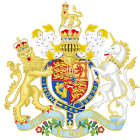 An amendment of the Colonial Governors Act (1700), the Criminal Jurisdiction Act holds colonial officials accountable to the Court of King’s Bench in England for crimes committed in the colonies. Image: The Royal coat of arms of the United Kingdom of Great Britain and Northern Ireland. An amendment of the Colonial Governors Act (1700), the Criminal Jurisdiction Act holds colonial officials accountable to the Court of King’s Bench in England for crimes committed in the colonies. Image: The Royal coat of arms of the United Kingdom of Great Britain and Northern Ireland.
Articles
Sarah Winter, “On the Morant Bay Rebellion in Jamaica and the Governor Eyre-George William Gordon Controversy, 1865-70″
|
David Rettenmaier |
| 15 Sep 1830 |
 On 15 September 1830, the world’s first major passenger railway opened with a huge celebration—and an unforgettable tragedy. The Liverpool and Manchester Railway stages a grand public opening with dignitaries including then-prime-minster Duke of Wellington. But, before the inaugural trains reach their destination, a fatal accident occurs to MP William Huskisson and, in Manchester, the cheering crowds give way to angry political protests. Image: The Remains of Stephenson's 'Rocket', 1829. Used with permission. Copyright (c) National Railway Museum / Science & Society Picture Library. On 15 September 1830, the world’s first major passenger railway opened with a huge celebration—and an unforgettable tragedy. The Liverpool and Manchester Railway stages a grand public opening with dignitaries including then-prime-minster Duke of Wellington. But, before the inaugural trains reach their destination, a fatal accident occurs to MP William Huskisson and, in Manchester, the cheering crowds give way to angry political protests. Image: The Remains of Stephenson's 'Rocket', 1829. Used with permission. Copyright (c) National Railway Museum / Science & Society Picture Library.
Articles
Paul Fyfe, “On the Opening of the Liverpool and Manchester Railway, 1830″
|
David Rettenmaier |
| 29 Aug 1833 |
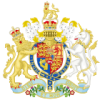 The Slavery Abolition Act of 1833 received the Royal Assent (which means it became law) on 29 August 1833. The Act outlawed slavery throughout the British Empire; Britain’s colonial slaves were officially emancipated on 1 August 1834 when the law came into force, although most entered a form of obligatory apprenticeship that ended in 1840. Image: The Royal coat of arms of the United Kingdom of Great Britain and Northern Ireland. Image: the Royal coat of arms of the United Kingdom of Great Britain and Northern Ireland. The Slavery Abolition Act of 1833 received the Royal Assent (which means it became law) on 29 August 1833. The Act outlawed slavery throughout the British Empire; Britain’s colonial slaves were officially emancipated on 1 August 1834 when the law came into force, although most entered a form of obligatory apprenticeship that ended in 1840. Image: The Royal coat of arms of the United Kingdom of Great Britain and Northern Ireland. Image: the Royal coat of arms of the United Kingdom of Great Britain and Northern Ireland.
Articles
Elsie B. Michie, "On the Sacramental Test Act, the Catholic Relief Act, the Slavery Abolition Act, and the Factory Act"
Sarah Winter, “On the Morant Bay Rebellion in Jamaica and the Governor Eyre-George William Gordon Controversy, 1865-70″
|
David Rettenmaier |
| 10 Jan 1840 |
The introduction of the Penny Post in 1840, the rapid expansion of the rail network in the UK, and the introduction of steamships on the transatlantic routes, created the optimum conditions for writing letters. Prior to 1840, the cost of inland postage was prohibitively expensive; it was calculated according to the number of sheets multiplied by the distance traveled. Additional charges were often levied and the burden of payment fell on the recipient, which did nothing to encourage frequent communication. The Penny Post Act drastically reduced the cost of an inland letter to a universal flat rate of just one penny for a half an ounce, and the introduction of the prepaid penny stamp removed the deterrent to accepting a letter.
Articles
Susan Donovan, “How the Post Office and Postal Products Shaped Mid-Nineteenth-Century Letter-Writing”
|
David Rettenmaier |
| 24 Aug 1846 |
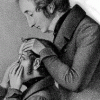 On 24 August 1846, Patrick Brontë had cataract surgery performed on his eye. Charlotte Brontë, who had accompanied her father to Manchester for the operation, used this time to begin writing the book that was to make her famous, Jane Eyre (1847). Image: Traditional position for cataract surgery. Courtesy of the Wellcome Library, London. On 24 August 1846, Patrick Brontë had cataract surgery performed on his eye. Charlotte Brontë, who had accompanied her father to Manchester for the operation, used this time to begin writing the book that was to make her famous, Jane Eyre (1847). Image: Traditional position for cataract surgery. Courtesy of the Wellcome Library, London.
Articles
Mary Wilson Carpenter, “A Cultural History of Ophthalmology in Nineteenth-Century Britain”
|
David Rettenmaier |
| Dec 1849 |
 On December 1849, Thomas Carlyle published “Occasional Discourse on the Negro Question” in Fraser’s Magazine; the article was later republished in his Critical and Miscellaneous Essays as “On the Nigger Question.” Image: Photograph of Thomas Carlyle, circa 1860s, by Eliott & Fry. This image is in the public domain in the United States as its copyright has expired. On December 1849, Thomas Carlyle published “Occasional Discourse on the Negro Question” in Fraser’s Magazine; the article was later republished in his Critical and Miscellaneous Essays as “On the Nigger Question.” Image: Photograph of Thomas Carlyle, circa 1860s, by Eliott & Fry. This image is in the public domain in the United States as its copyright has expired.
Articles
Sarah Winter, “On the Morant Bay Rebellion in Jamaica and the Governor Eyre-George William Gordon Controversy, 1865-70″
|
David Rettenmaier |
| 10 May 1857 to 20 Jun 1858 |
 The Indian Rebellion or Uprising, also known as the Sepoy Mutiny, began as a mutiny of sepoys of the British East India Company's army on 10 May 1857, in the town of Meerut, and soon escalated into other mutinies and civilian rebellions. It was not contained until the fall of Gwalior on 20 June 1858. Image: Felice Beato, Print of the hanging of two rebels, 1858 (albumen silver print). This image is in the public domain in the United States because its copyright has expired. The Indian Rebellion or Uprising, also known as the Sepoy Mutiny, began as a mutiny of sepoys of the British East India Company's army on 10 May 1857, in the town of Meerut, and soon escalated into other mutinies and civilian rebellions. It was not contained until the fall of Gwalior on 20 June 1858. Image: Felice Beato, Print of the hanging of two rebels, 1858 (albumen silver print). This image is in the public domain in the United States because its copyright has expired.
Articles
Priti Joshi, “1857; or, Can the Indian ‘Mutiny’ Be Fixed?”
Related Articles
Julie Codell, “On the Delhi Coronation Durbars, 1877, 1903, 1911″
Lorraine Janzen Kooistra, “The Moxon Tennyson as Textual Event: 1857, Wood Engraving, and Visual Culture”
Sarah Winter, “On the Morant Bay Rebellion in Jamaica and the Governor Eyre-George William Gordon Controversy, 1865-70″
|
David Rettenmaier |
| 19 Apr 1862 |
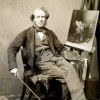 On 19 April 1862, the exhibition of William Powell Frith’s painting The Railway Station opens at the Fine Arts Gallery at No. 7 Haymarket, London. Image: Photograph of William Powell Frith (no date) by Maull & Polyblank. This image is in the public domain in the United States because its copyright has expired. On 19 April 1862, the exhibition of William Powell Frith’s painting The Railway Station opens at the Fine Arts Gallery at No. 7 Haymarket, London. Image: Photograph of William Powell Frith (no date) by Maull & Polyblank. This image is in the public domain in the United States because its copyright has expired.
Articles
Pamela Fletcher, "On the Rise of the Commercial Art Gallery in London"
|
David Rettenmaier |
| 25 Aug 1862 |
On 25 August 1862, London Victoria Station was opened, connecting London to the Kent coast.
Related Articles
Paul Fyfe, “On the Opening of the Liverpool and Manchester Railway, 1830″
Nancy Rose Marshall, “On William Powell Frith’s Railway Station, April 1862″
Carolyn W. de la L. Oulton, “‘Coquetting amid incredible landscapes’: Women on the River and the Railway”
|
David Rettenmaier |
| 2 Oct 1865 |
Gordon, a Jamaican former slave and elected member of the Jamaica House of Assembly, is executed by hanging after a court martial condemns him to death for his alleged role in encouraging the Morant Bay rebellion.
Articles
Sarah Winter, “On the Morant Bay Rebellion in Jamaica and the Governor Eyre-George William Gordon Controversy, 1865-70″
|
David Rettenmaier |
| 11 Oct 1865 |
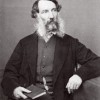 A rebellion by Black peasants against unjust treatment by Jamaican courts breaks out at Morant Bay, Jamaica on 11 October 1865. Image: Photograph of Governor Edward John Eyre, circa 1870, by Henry Hering. The Caribbean Photo Archive. This image is in the public domain in the United States because its copyright has expired. A rebellion by Black peasants against unjust treatment by Jamaican courts breaks out at Morant Bay, Jamaica on 11 October 1865. Image: Photograph of Governor Edward John Eyre, circa 1870, by Henry Hering. The Caribbean Photo Archive. This image is in the public domain in the United States because its copyright has expired.
Articles
Sarah Winter, “On the Morant Bay Rebellion in Jamaica and the Governor Eyre-George William Gordon Controversy, 1865-70″
|
David Rettenmaier |
| Dec 1865 |
 The Jamaica Committee, a coalition of politicians, writers, and scientists, is organized to seek governmental and legal accountability for the actions undertaken by Governor Edward John Eyre and his subordinates during thirty days of martial law in the aftermath of the Morant Bay rebellion in Jamaica. Image: Photograph of Governor Edward John Eyre, circa 1870, by Henry Hering. The Caribbean Photo Archive. This image is in the public domain in the United States because its copyright has expired. The Jamaica Committee, a coalition of politicians, writers, and scientists, is organized to seek governmental and legal accountability for the actions undertaken by Governor Edward John Eyre and his subordinates during thirty days of martial law in the aftermath of the Morant Bay rebellion in Jamaica. Image: Photograph of Governor Edward John Eyre, circa 1870, by Henry Hering. The Caribbean Photo Archive. This image is in the public domain in the United States because its copyright has expired.
Articles
Sarah Winter, “On the Morant Bay Rebellion in Jamaica and the Governor Eyre-George William Gordon Controversy, 1865-70″
|
David Rettenmaier |
| 2 Jul 1866 |
Hyde Park Demonstration of the Major Reform League on 23 July 1866. After the British government banned a meeting organized to press for voting rights, 200,000 people entered the Park and clashed with police and soldiers.
Related Articles
Peter Melville Logan, “On Culture: Matthew Arnold’s Culture and Anarchy, 1869″
Sarah Winter, “On the Morant Bay Rebellion in Jamaica and the Governor Eyre-George William Gordon Controversy, 1865-70″
|
David Rettenmaier |
| 1 Feb 1867 |
Irish Fenians attack a coast guard station in County Kerry, Ireland, seizing arms and attacking policemen; authorities prevent a similar attack by Fenians on Chester Castle in Western England.
Related Articles
Sarah Winter, “On the Morant Bay Rebellion in Jamaica and the Governor Eyre-George William Gordon Controversy, 1865-70″
|
David Rettenmaier |
| 11 Feb 1867 |
Major Reform League march and demonstration in Trafalgar Square, London on 11 February 1867.
Related Articles
Sarah Winter, “On the Morant Bay Rebellion in Jamaica and the Governor Eyre-George William Gordon Controversy, 1865-70″
|
David Rettenmaier |
| 27 Mar 1867 |
 The Jamaica Committee’s first attempted indictment, at Market Drayton in Shropshire, of Edward John Eyre, ex-Governor of Jamaica, for the murder of George William Gordon; hearing ends in Eyre’s discharge by the grand jury. Image: Photograph of Governor Edward John Eyre, circa 1870, by Henry Hering. The Caribbean Photo Archive. This image is in the public domain in the United States because its copyright has expired. The Jamaica Committee’s first attempted indictment, at Market Drayton in Shropshire, of Edward John Eyre, ex-Governor of Jamaica, for the murder of George William Gordon; hearing ends in Eyre’s discharge by the grand jury. Image: Photograph of Governor Edward John Eyre, circa 1870, by Henry Hering. The Caribbean Photo Archive. This image is in the public domain in the United States because its copyright has expired.
Articles
Sarah Winter, “On the Morant Bay Rebellion in Jamaica and the Governor Eyre-George William Gordon Controversy, 1865-70″
|
David Rettenmaier |
| 11 Apr 1867 |
A Middlesex grand jury at London’s Old Bailey criminal court dismissed charges brought by the Jamaica Committee against Colonel Abercrombie Nelson and Lieutenant Herbert Brand for the murder (via illegal court martial) of George William Gordon at Morant Bay, Jamaica in October 1865. The trial was a result of the Morant Bay Rebellion of 11 October 1865.
Articles
Sarah Winter, “On the Morant Bay Rebellion in Jamaica and the Governor Eyre-George William Gordon Controversy, 1865-70″
|
David Rettenmaier |
| 15 Aug 1867 |
 On 15 August 1867, the Representation of the People Act, 1867 (also known as the Second Reform Act), received the royal assent. This act increased the electorate of England and Wales to approximately one man in three, theoretically including substantial numbers of working-class men. Image: The Royal coat of arms of the United Kingdom of Great Britain and Northern Ireland. On 15 August 1867, the Representation of the People Act, 1867 (also known as the Second Reform Act), received the royal assent. This act increased the electorate of England and Wales to approximately one man in three, theoretically including substantial numbers of working-class men. Image: The Royal coat of arms of the United Kingdom of Great Britain and Northern Ireland.
Articles
Janice Carlisle, "On the Second Reform Act, 1867"
Related Articles
Carolyn Vellenga Berman, “On the Reform Act of 1832″
Elaine Hadley, “On Opinion Politics and the Ballot Act of 1872″
Herbert F. Tucker, "On Event"
Sarah Winter, “On the Morant Bay Rebellion in Jamaica and the Governor Eyre-George William Gordon Controversy, 1865-70″
|
David Rettenmaier |
| 1 Dec 1867 |
A bomb planted by Irish Fenians at Clerkenwell Prison in London exploded on 13 December 1867, killing over a dozen people and injuring many more.
Related Articles
Sarah Winter, “On the Morant Bay Rebellion in Jamaica and the Governor Eyre-George William Gordon Controversy, 1865-70″
|
David Rettenmaier |
| Jun 1868 |
 3 June 1868 saw the last, unsuccessful action against Edward John Eyre. This was the final effort by the Jamaica Committee to prosecute ex-Governor of Jamaica Edward John Eyre under the Colonial Governors Act for abuse of power in imposing an extended period of martial law during the 1865 Morant Bay rebellion; the case is sent forward to a grand jury, but Eyre is not indicted. Image: Photograph of Governor Edward John Eyre, circa 1870, by Henry Hering. The Caribbean Photo Archive. This image is in the public domain in the United States because its copyright has expired. 3 June 1868 saw the last, unsuccessful action against Edward John Eyre. This was the final effort by the Jamaica Committee to prosecute ex-Governor of Jamaica Edward John Eyre under the Colonial Governors Act for abuse of power in imposing an extended period of martial law during the 1865 Morant Bay rebellion; the case is sent forward to a grand jury, but Eyre is not indicted. Image: Photograph of Governor Edward John Eyre, circa 1870, by Henry Hering. The Caribbean Photo Archive. This image is in the public domain in the United States because its copyright has expired.
Articles
Sarah Winter, “On the Morant Bay Rebellion in Jamaica and the Governor Eyre-George William Gordon Controversy, 1865-70″
|
David Rettenmaier |
| Jun 1870 |
 Appeal before the Exchequer Chamber of the civil suit brought by Jamaican citizen Alexander Phillips against ex-Governor of Jamaica, Edward John Eyre, for assault, battery and false imprisonment during martial law from October 13 to November 13, 1865 at Morant Bay, Jamaica, results in the upholding of the Jamaica Assembly’s Indemnity Act for military and administrative actions under martial law, nullifying Phillips’s right to sue Eyre in English courts. Image: Photograph of Governor Edward John Eyre, circa 1870, by Henry Hering. The Caribbean Photo Archive. This image is in the public domain in the United States because its copyright has expired. Appeal before the Exchequer Chamber of the civil suit brought by Jamaican citizen Alexander Phillips against ex-Governor of Jamaica, Edward John Eyre, for assault, battery and false imprisonment during martial law from October 13 to November 13, 1865 at Morant Bay, Jamaica, results in the upholding of the Jamaica Assembly’s Indemnity Act for military and administrative actions under martial law, nullifying Phillips’s right to sue Eyre in English courts. Image: Photograph of Governor Edward John Eyre, circa 1870, by Henry Hering. The Caribbean Photo Archive. This image is in the public domain in the United States because its copyright has expired.
Articles
Sarah Winter, “On the Morant Bay Rebellion in Jamaica and the Governor Eyre-George William Gordon Controversy, 1865-70″
|
David Rettenmaier |
| 6 Nov 1872 to 22 Dec 1872 |
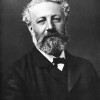 From 6 November to 22 December 1872, Jules Verne's Around the World in Eighty Days is serialized in Le Temps. The review's circulation booms, and shipping lines and railroads vie to be mentioned in the text, a phenomenon sometimes regarded as the first example of product placement. In an example of the intersection of commerce and literature, the novel contains a host of references to contemporary businesses and products. Image: Restored photograph of Jules Verne by Félix Nadar circa 1878. This image is in the public domain in the United States as its copyright has expired. From 6 November to 22 December 1872, Jules Verne's Around the World in Eighty Days is serialized in Le Temps. The review's circulation booms, and shipping lines and railroads vie to be mentioned in the text, a phenomenon sometimes regarded as the first example of product placement. In an example of the intersection of commerce and literature, the novel contains a host of references to contemporary businesses and products. Image: Restored photograph of Jules Verne by Félix Nadar circa 1878. This image is in the public domain in the United States as its copyright has expired.
Related Articles
Claudia Nelson, “Mass Media Meets Children’s Literature, 1899: E. Nesbit’s The Story of the Treasure Seekers”
|
David Rettenmaier |
| Sep 1873 |
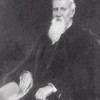 September 1873 saw the beginning of the "panic of 1873," a financial crisis brought on in part by speculation in railroads. The crisis included the fall of American banking house Jay Cook & Company, which was precipitated by the failure of Northern Pacific Railway shares. The panic triggered a depression in Europe and North America that lasted from 1873 until 1879. Image: Portrait, Jay Cooke, founder of Jay Cooke & Company. This image is in the public domain in the United States as its copyright has expired. September 1873 saw the beginning of the "panic of 1873," a financial crisis brought on in part by speculation in railroads. The crisis included the fall of American banking house Jay Cook & Company, which was precipitated by the failure of Northern Pacific Railway shares. The panic triggered a depression in Europe and North America that lasted from 1873 until 1879. Image: Portrait, Jay Cooke, founder of Jay Cooke & Company. This image is in the public domain in the United States as its copyright has expired.
Related Articles
Joshua Gooch, “On ‘Black Friday,’ 11 May 1866″
Deborah Denenholz Morse, “The Way He Thought Then: Modernity and the Retreat of the Public Liberal in Anthony Trollope’s The Way We Live Now, 1873”
|
David Rettenmaier |










